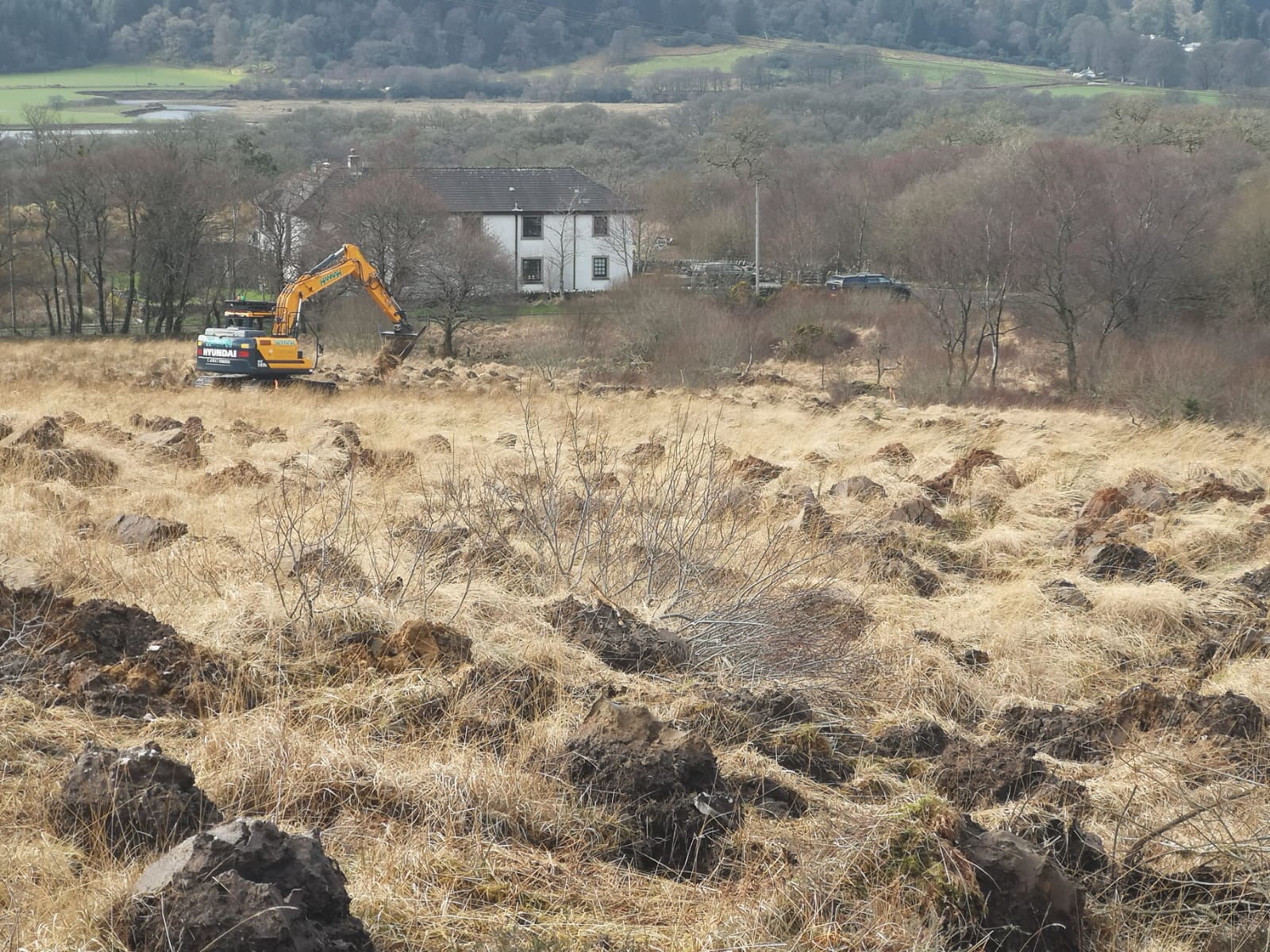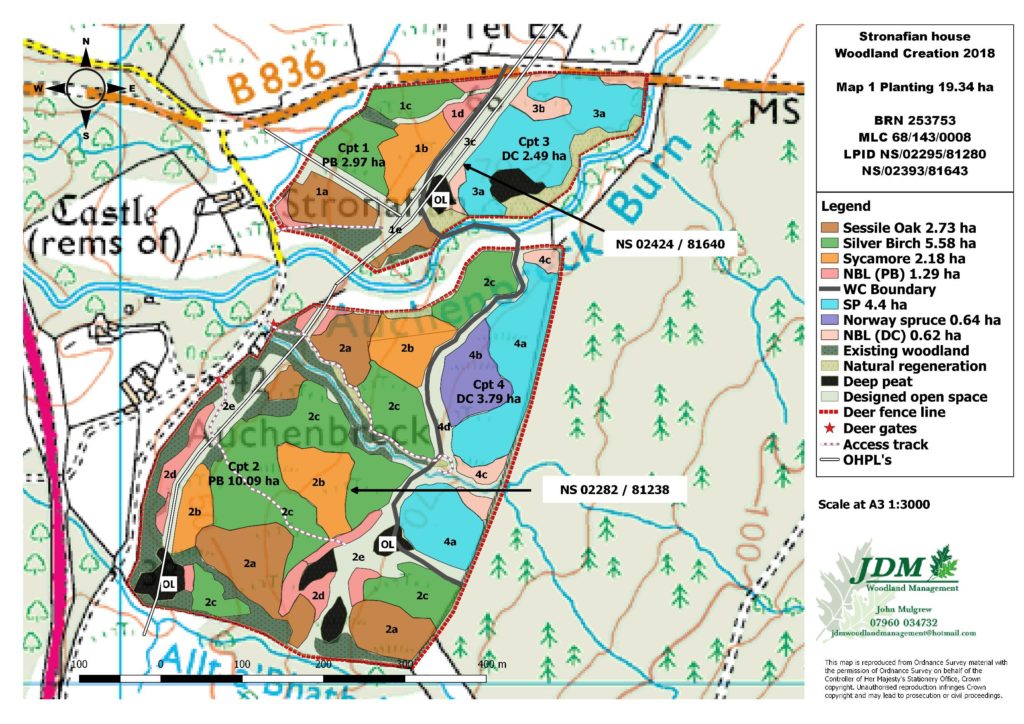
The Ecologist
Stronafian, Colintraive, Argyll & Bute
Land use: 23 ha of farmland within landholding, previously managed for sheep production.
Challenge:
The aim of planting was to create a diverse, productive mixed woodland for an Ecologist next to his home. He wanted to improve biodiversity on site and create a beautiful woodland for his children to play in and his family to walk through. The woodland must also:
- Extend woodland habitats adjacent to an ancient woodland SSSI
- Improve habitat for local species, including golden eagles, red squirrels and black grouse
- Be suitable for deer stalking activities
How we addressed this:
We secured funding for this scheme through the Forestry Grant Scheme https://forestry.gov.scot/support-regulations/forestry-grants and Woodland Carbon Code https://woodlandcarboncode.org.uk/.
Made up of two sites, of which 19 hectares was planted with trees native or naturalised to Scotland, this woodland predominantly comprises Silver Birch, Oak, Sycamore and Scots pine with a small element of Norway spruce. In addition, Downy Birch, Alder, Rowan, Bird Cherry, Hawthorn and Aspen have been planted at a low density around woodland margins and key riparian zones to protect important habitats and further improve local biodiversity.
When designing the woodland, connectivity between native woodland fragments, existing flora and fauna, deep peat, archaeological sites, current public access, views from the local area and future use of the site for deer stalking were also considered.
The woodland will be managed using a CCF (Continuous Cover Forestry) silvicultural system. Yields of timber will be supplied over time whilst gradually opening the canopy through a managed thinning programme, ultimately improving the quality of the ever-maturing crop and allowing natural regeneration to supplement gaps created. This style of management helps to increase species and structural diversity, providing a more resilient woodland in relation to climate change, pests, diseases and extreme weather events. Without the impact of large clearfells, it is more sympathetic to the site and its nature conservation interests, the local area’s road infrastructure and to the local landscape.
Results:
Over time, this multi-purpose woodland will deliver a range of benefits by;
- Producing a range of sustainable wood products, providing a tax-free income to the landowner
- Protecting and enhancing biodiversity (flora and fauna), water quality and peatland habitats
- Sequestering carbon (contributing towards Scotland’s climate change targets)
- Improving public access


